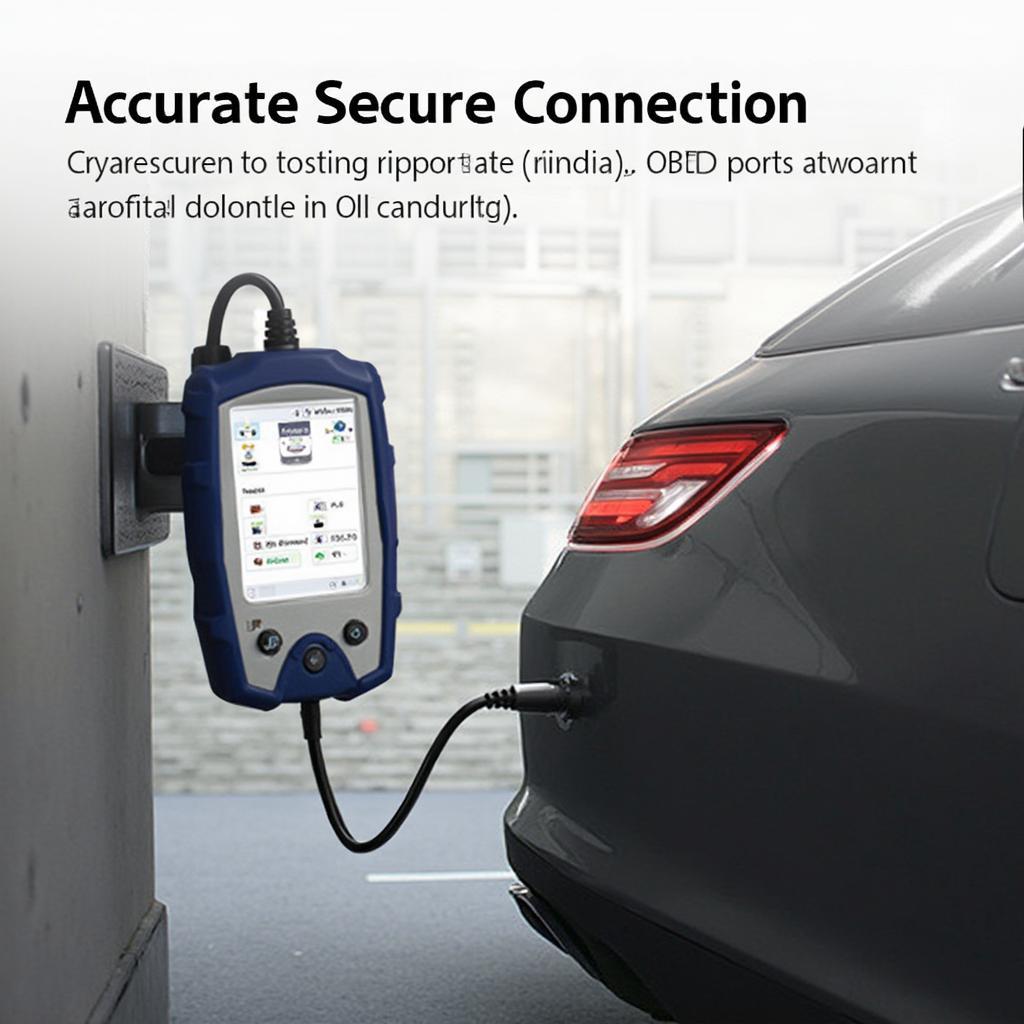OBD2 socket pins are the gateway to your vehicle’s diagnostic data. This article will delve into the intricacies of these pins, explaining their functions and how they can be used for troubleshooting and maintenance. We’ll cover everything from basic pin identification to advanced diagnostic techniques.
Understanding the function of each obd2 socket pin is crucial for anyone working with vehicle diagnostics. These pins provide the interface between your OBD2 scanner and your car’s various electronic control units (ECUs). They transmit vital data about engine performance, emissions, and other critical systems. This information can be used to identify and fix problems, improve fuel efficiency, and even enhance vehicle performance. If you’re looking to delve deeper into a specific car model’s OBD2 system, check out our volvo 2006 s40 obd2 connector.
Decoding the 16 Pins of the OBD2 Socket
The standard OBD2 socket has 16 pins, each serving a specific purpose. Some pins provide power, while others are dedicated to communication protocols. Let’s break down the function of each pin:
- Pin 1: Used for manufacturer-specific diagnostics.
- Pin 2: J1850 Bus+ (for specific vehicle makes).
- Pin 3: Manufacturer-specific diagnostics.
- Pin 4: Chassis Ground.
- Pin 5: Signal Ground.
- Pin 6: CAN High (Controller Area Network).
- Pin 7: ISO 9141-2 K-Line.
- Pin 8: Manufacturer-specific diagnostics.
- Pin 9: Manufacturer-specific diagnostics.
- Pin 10: J1850 Bus- (for specific vehicle makes).
- Pin 11: Manufacturer-specific diagnostics.
- Pin 12: Manufacturer-specific diagnostics.
- Pin 13: Manufacturer-specific diagnostics.
- Pin 14: CAN Low (Controller Area Network).
- Pin 15: ISO 9141-2 L-Line.
- Pin 16: Battery Power.
What is the purpose of each obd2 socket pin?
Each obd2 socket pin plays a vital role in the diagnostic process. The power pins ensure the scanner has the necessary electricity to operate, while the ground pins provide a stable electrical reference. The communication pins carry the data between the scanner and the vehicle’s ECUs. If you’ve encountered issues with your HUD OBD2 system, our hud obd2 not working guide might provide some solutions.
 OBD2 Scanner Connected to Car
OBD2 Scanner Connected to Car
Common Issues with OBD2 Socket Pins
Corrosion, bent pins, and loose connections are common issues that can affect the functionality of obd2 socket pins. These problems can interrupt communication between the scanner and the vehicle, leading to inaccurate readings or even preventing the scanner from connecting altogether. A BMW owner might find our bmw obd2 socket repair kit helpful in addressing such issues.
Advanced Diagnostics Using OBD2 Socket Pins
While most OBD2 scanners utilize the standard communication protocols, some advanced tools can access manufacturer-specific data through designated pins. This allows for more in-depth diagnostics and troubleshooting. Consider our article on 2004 dodge durango pcm swap reprogram using obd2 pins for a specific example of how these pins can be utilized.
“Understanding the intricacies of the OBD2 socket pins is essential for any serious automotive enthusiast or professional technician,” says Alex Thompson, Lead Automotive Diagnostic Engineer at AutoTech Solutions. “It allows for a deeper understanding of vehicle communication and unlocks the potential for advanced diagnostics.”
“Don’t underestimate the importance of a clean and functional OBD2 port,” adds Sarah Miller, Senior Automotive Technician at Miller’s Auto Repair. “Regular inspection and maintenance of the obd2 socket pins can prevent future diagnostic headaches.”
In conclusion, understanding obd2 socket pins is key to unlocking the diagnostic power of your OBD2 scanner. By knowing the function of each pin, you can effectively troubleshoot vehicle issues, improve performance, and maintain optimal vehicle health. For those interested in Peugeot vehicles, you might find our resource on obd2 peugeot 308 insightful.
FAQ:
- What is the function of Pin 6 on the OBD2 socket? (CAN High)
- Which pins are used for manufacturer-specific diagnostics? (1, 3, 8, 9, 11, 12, 13)
- What is the difference between Pin 2 and Pin 10? (J1850 Bus+ and J1850 Bus-)
- What can cause problems with OBD2 socket pins? (Corrosion, bent pins, loose connections)
- Why is it important to understand the function of each pin? (For effective troubleshooting and advanced diagnostics)
- How can I fix a broken OBD2 socket pin? (Consult a professional or consider a repair kit)
- Where can I find more information about specific vehicle OBD2 systems? (Consult your vehicle’s service manual or online resources)
Need further assistance? Contact us via WhatsApp: +1(641)206-8880, Email: [email protected] or visit us at 789 Elm Street, San Francisco, CA 94102, USA. Our 24/7 customer support team is ready to help.

